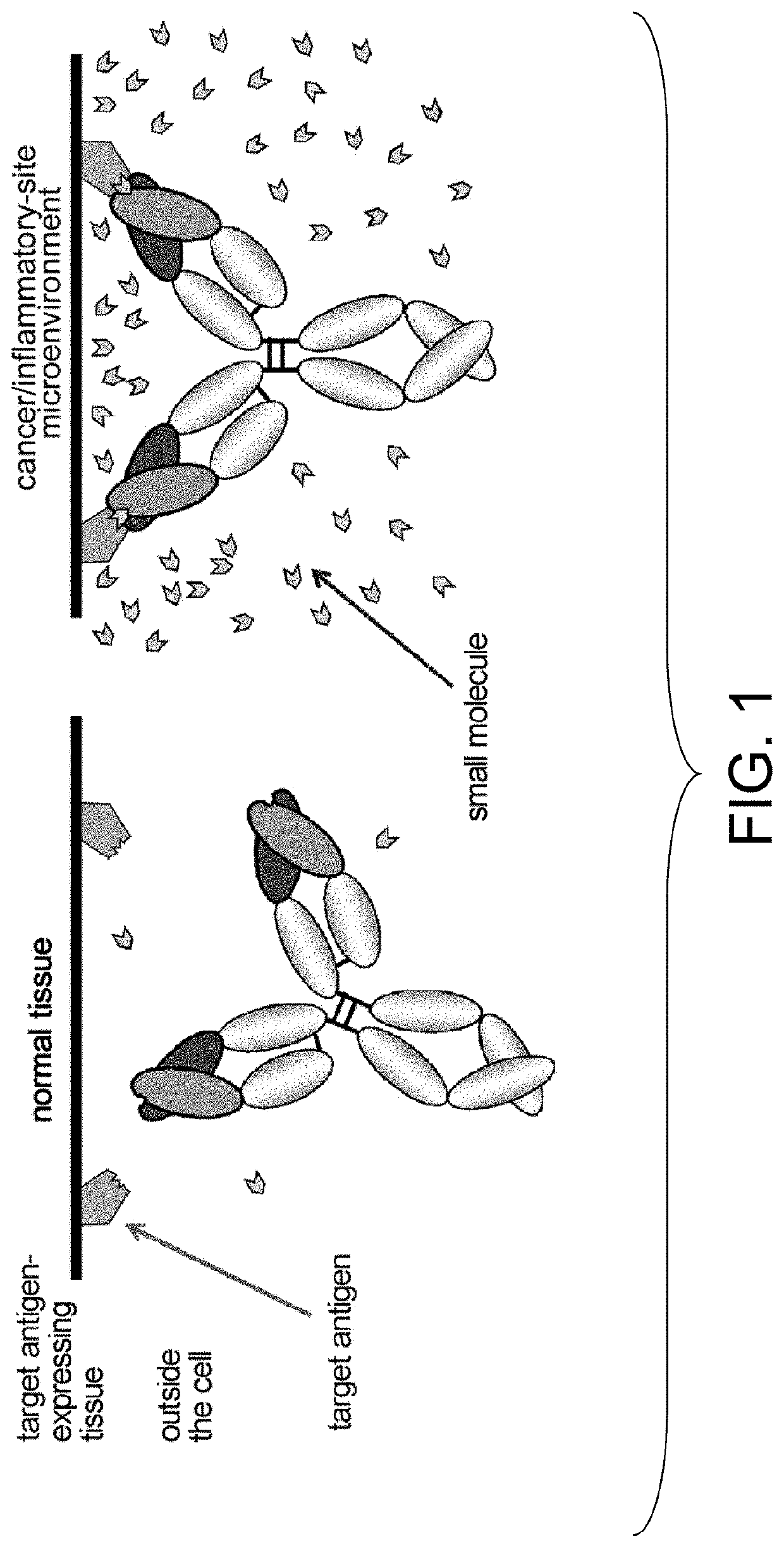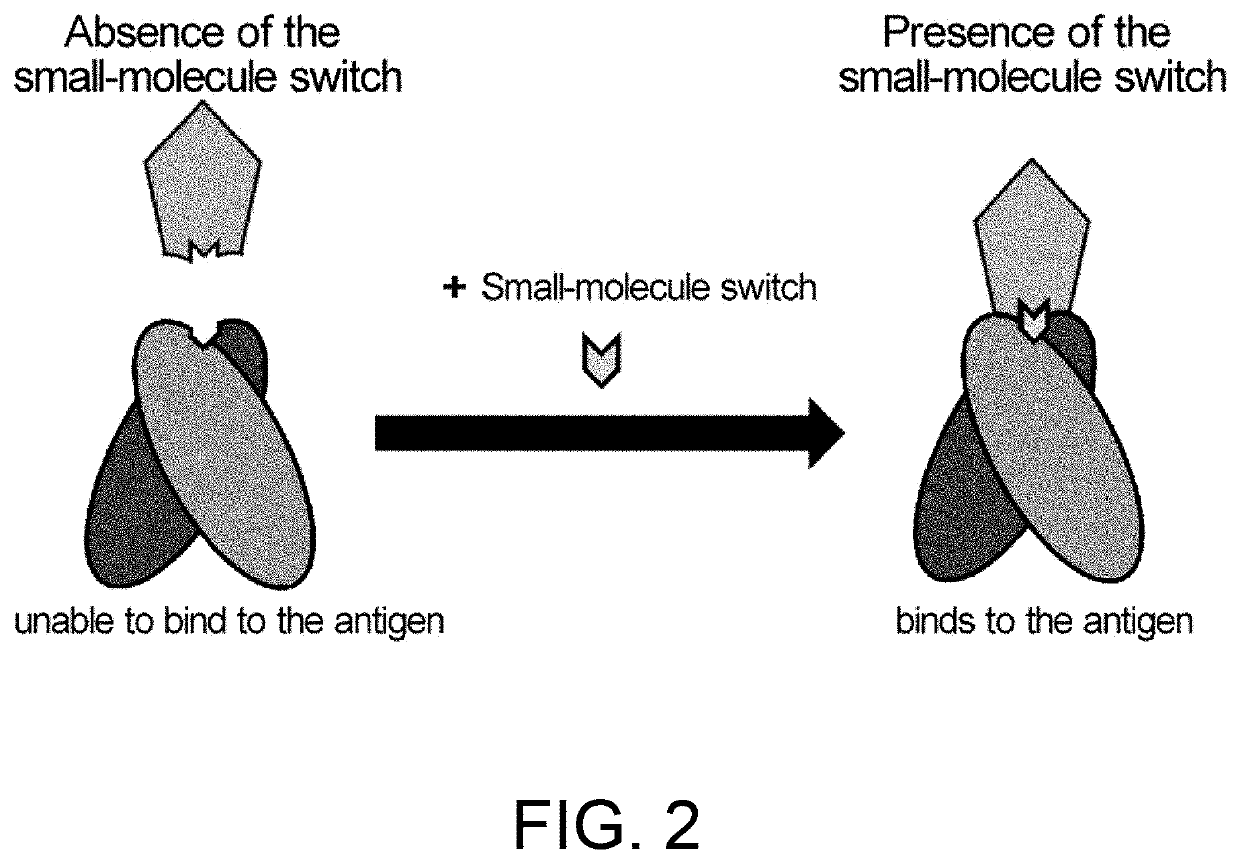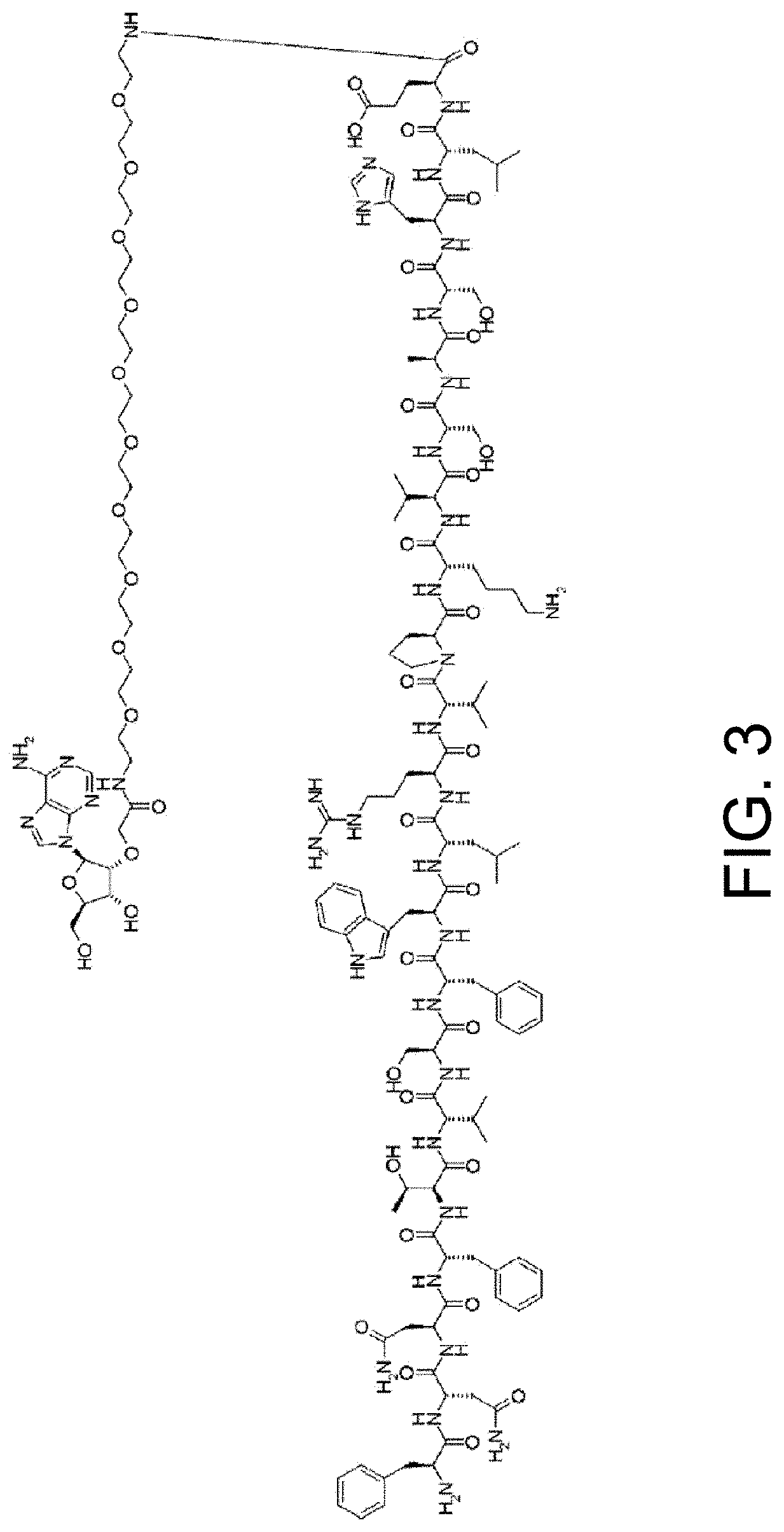Antigen-binding molecules, the antigen-binding activity of which varies according to the concentration of compounds, and libraries of said molecules
a technology libraries, which is applied in the field of libraries of antigen binding molecules or antigen binding domains comprising an antigen binding domain, can solve the problems of serious side effects, severe skin toxicity and liver toxicity, and major problems, and achieve the effects of showing drug efficacy, short time period, and avoiding side effects
- Summary
- Abstract
- Description
- Claims
- Application Information
AI Technical Summary
Benefits of technology
Problems solved by technology
Method used
Image
Examples
embodiment 1
An Antigen-Binding Molecule Containing an Fc Region Having FcRn-Binding Activity Under a Neutral pH Range Condition and Whose Binding Activity Toward Activating FcγR is Lower than the Binding Activity of a Native Fc Region Toward Activating FcγR
[0603]The antigen-binding molecule of Embodiment 1 forms a trimeric complex by binding to two molecules of FcRn; however, it does not form any complex containing activating FcγR. An Fc region whose binding activity toward activating FcγR is lower than the binding activity of a native Fc region toward activating FcγR can be prepared by altering the amino acids of the native Fc region as described above. Whether the binding activity toward activating FcγR of the altered Fc region is lower than the binding activity toward activating FcγR of the native Fc region can be appropriately tested using the methods described in the section “Binding Activity” above.
[0604]Preferred activating Fcγ receptors include FcγRI (CD64) which includes FcγRIa, FcγRIb...
embodiment 2
An Antigen-Binding Molecule Containing an Fc Region Having FcRn-Binding Activity Under a Neutral pH Range Condition and Whose Binding Activity Toward an Inhibitory FcγR is Higher than the Binding Activity Toward an Activating Fcγ Receptor
[0610]By binding to two molecules of FcRn and one molecule of inhibitory FcγR, the antigen-binding molecule of Embodiment 2 can form a complex comprising these four molecules. However, since a single antigen-binding molecule can bind with only one molecule of FcγR, the single antigen-binding molecule in a state bound to an inhibitory FcγR cannot bind to other activating FcγRs. Furthermore, it has been reported that an antigen-binding molecule that is incorporated into cells in a state bound to an inhibitory FcγR is recycled onto the cell membrane, and thus escapes from degradation inside the cells (Immunity (2005) 23, 503-514). More specifically, it is considered that antigen-binding molecules having selective binding activity toward an inhibitory F...
embodiment 3
An Antigen-Binding Molecule Containing an Fc Region, in which One of the Two Polypeptides Constituting the Fc Region has an FcRn-Binding Activity Under a Neutral pH Range Condition and the Other Polypeptide does not have FcRn-Binding Activity Under a Neutral pH Range Condition
[0619]By binding to one molecule of FcRn and one molecule of FcγR, the antigen-binding molecule of Embodiment 3 can form a trimeric complex; however, it does not form any heterocomplex comprising four molecules including two molecules of FcRn and one molecule of FcγR. As an Fc region in which one of the two polypeptides constituting the Fc region has an FcRn-binding activity under a neutral pH range condition and the other does not have any FcRn-binding activity under a neutral pH range condition contained in the antigen-binding molecule of Embodiment 3, Fc regions derived from bispecific antibodies may be suitably used. Bispecific antibodies are two types of antibodies having specificities toward different ant...
PUM
| Property | Measurement | Unit |
|---|---|---|
| Time | aaaaa | aaaaa |
| Time | aaaaa | aaaaa |
| Time | aaaaa | aaaaa |
Abstract
Description
Claims
Application Information
 Login to View More
Login to View More - R&D
- Intellectual Property
- Life Sciences
- Materials
- Tech Scout
- Unparalleled Data Quality
- Higher Quality Content
- 60% Fewer Hallucinations
Browse by: Latest US Patents, China's latest patents, Technical Efficacy Thesaurus, Application Domain, Technology Topic, Popular Technical Reports.
© 2025 PatSnap. All rights reserved.Legal|Privacy policy|Modern Slavery Act Transparency Statement|Sitemap|About US| Contact US: help@patsnap.com



